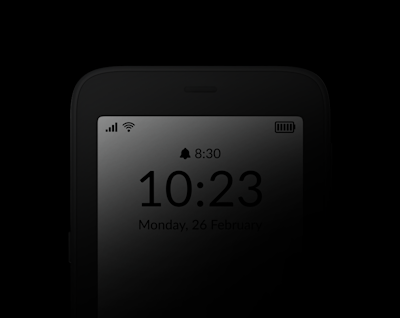
Ditch FOMO, Embrace JOMO
It’s 7 AM on a weekday. You reach under your pillow to turn off the alarm clock. Since you’re already holding your phone, you decide to quickly check your email to see if any early bird customers or work colleagues have sent you anything urgent.
Ten minutes later, while you’re brushing your teeth, you anxiously eye your buzzing phone, as messages take over your notification screen. Though you’re not really required to respond yet as you start at 9, you make sure none of the texts require you to storm out of the door, without breakfast, to put out project fires.
By the time you reach the office, you’re already slightly overwhelmed with how your work keeps piling up. Does it truly have to be this way? Is being in emergency mode 24/7 a norm for the modern worker, or do we overambitiously impose it on ourselves?
The fine line between healthy involvement and FOMO
When you think of the famous Fear Of Missing Out syndrome, you most likely visualize its popular, social facet. In your twenties, FOMO is being afraid of skipping that one party at the dorm or a dinner out with friends, in case it turns out to be a night to remember.
You simply have got to be there for it, period. Still, as you accelerate your career, FOMO stops being the giggly term for ‘epic’ things in life and becomes more of a professional fear. Missing that one email. Switching off notifications after 8 PM and not realizing your client pinged you at 8:30 PM about the servers being down. And, conversely, feeling like you’re not up-to-date with your social media feeds after a 10-hour workday.
Paradoxically, our need to be involved each and every second of the day makes us less present than ever before. It’s not just some of us that struggle with these feelings. Take a closer look next time you’re on the subway or in a crowded food court – how many people are engaging themselves in one or another activity involving their smartphones? How many can you see reading books on public transport, in comparison to those who are scrolling through their news feeds?
Chances are you’ve already heard about FOMO’s guilty party – the Dopamine Loop – or her equally influential relative, The Hooked Model (if you haven’t, we highly recommend you take a look at an article by guest author Anastasia Dedyukhina, renowned coach, TEDx speaker, and author of “Homo Distractus”).
In general terms, we’re always somewhere between being triggered, performing an action, and feeling rewarded, just to act upon the repetitive trigger again. This can be anything from overusing our social media platforms, to being lured to an e-commerce site way too often and purchasing way too many items.
Since the early 1960s, scientists have believed that dopamine is responsible for our feelings of happiness and satisfaction. As a result, humans were to involve in certain actions to provoke its release. Still, in recent years, questions have been raised as to the validity of the theory. Researchers Kent C. Berridge and Terry Robinson have argued that dopamine is not just the reward, per se, but is also present in our bodies while we try to achieve our goal.
How exactly does that change our perception of dopamine? Berridge, professor of psychology and neuroscience, defined two intertwined mechanisms – “wanting” and “liking”. We like, therefore we want – so far, so simple. Still, as it often is, the two mechanisms don’t impact us equally. Namely, “wanting” is a much stronger driving force than “liking”, and – in an extreme form – can lead us to acting without any actual incentive. Now, let’s relate this to how often we catch ourselves checking our feeds or email unwittingly. Sounds familiar, doesn’t it?
Our “wanting” mechanism gets us quickly hooked on certain behavior – things we’re not necessarily proud of, or habits we find disturbing in ourselves and our loved ones. At a recent education conference, top addiction expert Mandy Saligari has also disturbingly reported that giving children a smartphone or tablet to play with entails a chemical reaction resemblant to a shot of cocaine. Not exactly reality in bright colors.
What about FOMO is rooted in our need to become a multitasking star with efficacy levels going through the roof? Our bodies also experience the same mechanisms as during social media exposure. When we try to stay acute and on top of each and every incoming task, our mind develops a habit of constantly searching for stimulation – rechecking our email for the 37th time, refreshing our messaging app, reading all new intranet notifications. In simple terms, external stimuli become our king and dictate the rules of the game, instead of us ruling over the tens of daily tasks.
A woman pouring tea
A realistic solution
Let’s stop here for a moment.
We’ve addressed the problem and all the consequences it entails.
What can we realistically do about it in an age like ours? It’s not like we can instantly pull the internet plug, drop all our digital equipment, and still remain in the same position at work or stay up-to-date with our sister’s honeymoon photos. Is there a way to find a solution halfway?
Though what we’re about to tell you is the cliché of the cliché, just a couple decades ago, before we fell head over heels for personal tech, things looked completely different. For instance, when our parents arranged a time and meeting place for their first date, they didn’t text “Where are you?” the minute they showed up, but carefully waited until the familiar face emerged from the crowd. This tiny nondigital interaction could be considered JOMO (the Joy of Missing Out), the opposite of FOMO.
From a different angle, remember the NY Stock Exchange scene from the epic 1983 movie ‘Trading Places’? A room packed with screaming stockbrokers, equipped with nothing but a pen and notebook, and – rarely – a landline phone in hand. No computers on the ground floor!
Naturally, we can’t go back in time, but if being social and doing serious business was possible without a connection to the net, then we can certainly arrange for offline time in the evenings and on weekends. All in all, while tech facilitates communication and helps us make sure we’re not being stood up by a prospective date, we’d all benefit from a breather. This refers to us as private individuals, as well as us in the role of employees, managers, and clients.
If we care about our private lives and the condition of our business, the call for regular digital time-outs should be a promoted standard. The fact that most employees put on a “happy-to-be-of-service” face does not mean the expression is equally genuine after a ten-hour long shift or overtime.
Unless we communicate to our employees that we value their time off, they might end up treating their work phones as a third limb. More pragmatically, if the ideological or positive PR aspects aren’t convincing enough for CEOs and decision makers, then some of the recent financial metrics should.
According to the American Psychological Association, shifting between tasks can cost as much as 40 percent of your employees’ productive time. This, combined with the stress induced by silently requiring your employees to respond after working hours creates a drastic productivity downfall, in comparison to personnel whose time off is genuinely and consequently respected.
Is there anything you’d like to add, have we missed anything? If you’re interested in sharing your experiences with us or writing a guest post for us, send us an email via hello@mudita.com!
Please feel free to get in touch via social media (send us some photos or videos too), you can find us on Facebook, Twitter and Instagram, let’s connect! To learn more about Mudita, take a look at out our website and our other posts.
If you enjoyed reading this article, please share and recommend it!
Related stories

Stop Mindless Scrolling: Break the Habit & Reclaim Your Time
Mindless scrolling harms productivity & mental health. Reclaim time by setting limits through mindful tech use & tools like Mudita Kompakt for intentional use.

Desk-scaping: The art of decluttering your workspace
A decluttered space eliminates distractions and does not disrupt the flow of your work.

First glimpse of Mudita Kompakt
Mudita Kompakt is Mudita's upcoming minimalist phone with an E-Ink touchscreen, designed for simplicity and reducing digital noise.
If you'd like to receive the best stories from our blog, keep up to date with our progress and get notified about our product releases and special discounts.